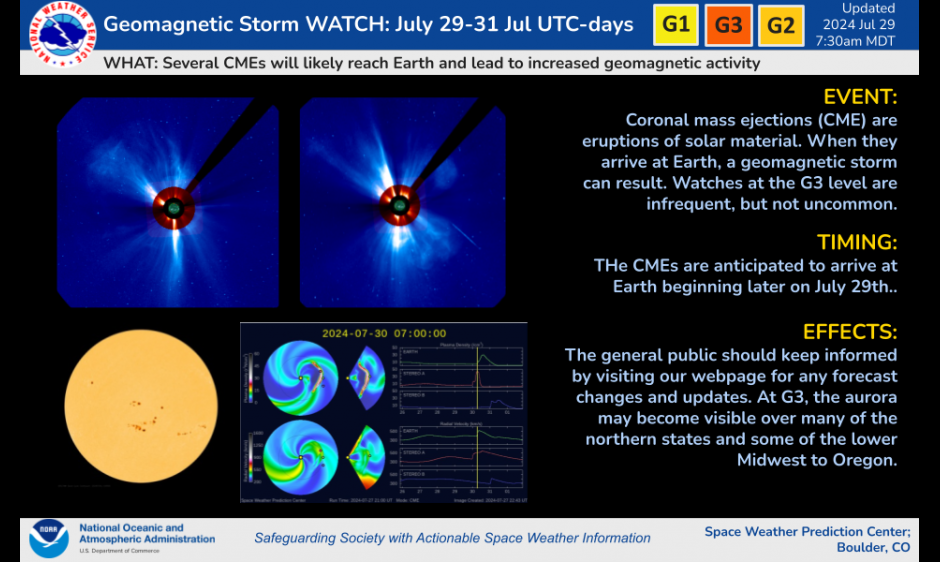
Geomagnetic storm watches are out for 29-31 July due to a number of coronal mass ejections (CMEs). Solar activity was elevated through the weekend and various events, including solar flares and filament eruptions were associated with CMEs. Some of these CMEs were determined to have Earth-directed components and arrival could begin as early as July 29th due to an event early on 27 July. Additional CMEs recently departed the Sun and are expected to arrive July 30th and continue into July 31st. Any CME arrival on 29 July could result in G1 (Minor) storm levels, however, the brunt of the activity is most likely on 30 July when additional CMEs from 27-28 July arrive and this could lead to G2-G3 levels as indicated by the WSA-Enlil model. CME influences will likely continue into 31 July as it takes time for CMEs to progress over and past Earth. Still, additional CMEs continue to erupt from the Sun due to the number of active regions and the associated complex sunspot groups, and additional CME arrivals are possible. Flare probabilities have increased and M-class flares (R1-R2; Minor-Moderate) events are now expected through most of the week, with a slight chance to chance of X-class activity (R3; Strong). Continue to follow our webpage for the latest information and forecasts.